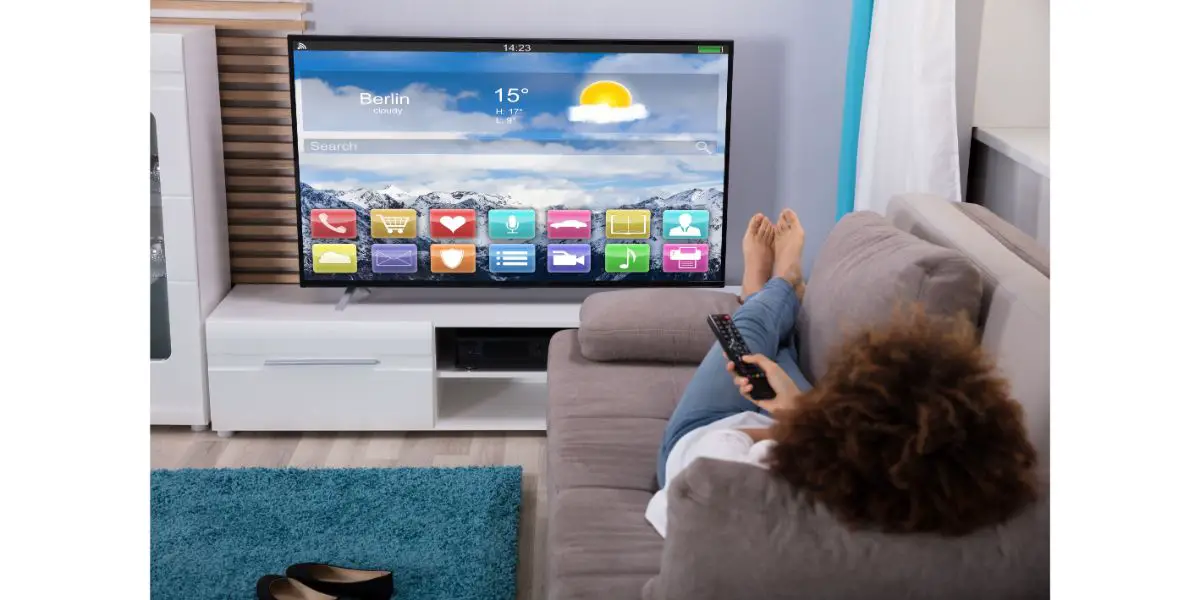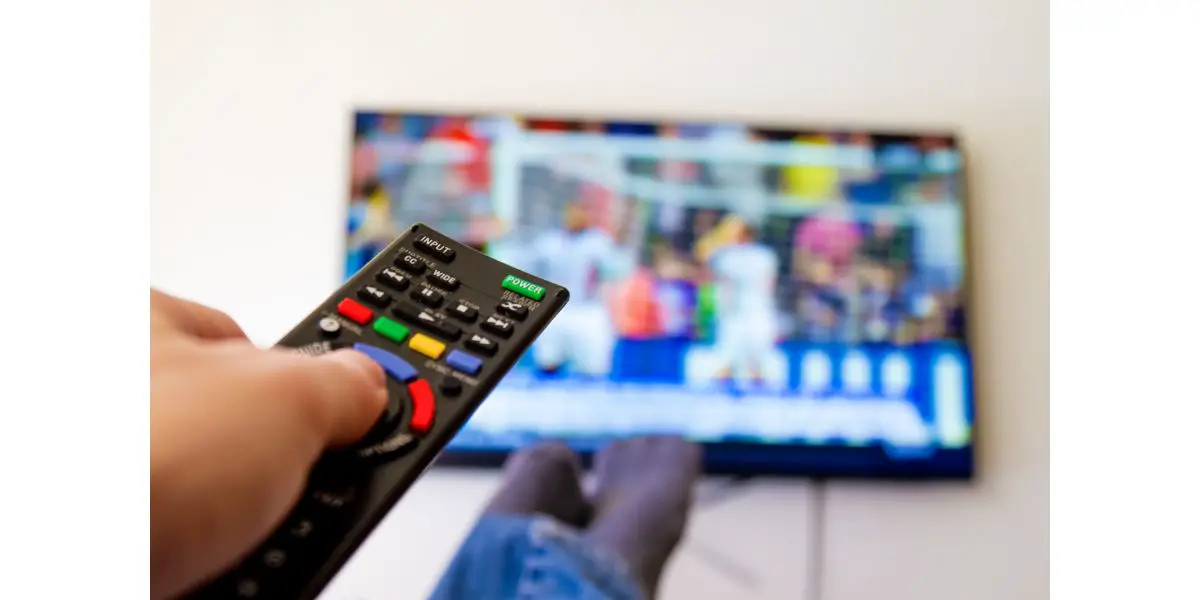Disclaimer: This post may contain affiliate links, meaning we get a small commission if you make a purchase through our links, at no cost to you. For more information, please visit our Disclaimer Page.
Smart TVs are a must-have for many families and individuals today. Thanks to all of the available apps, you can use your favorite streaming services and even watch free shows and films. A smart TV can interfere with your Wi-Fi, but it’s just one of the causes of your problems.
Table of Contents
Can a Smart TV Interfere with Wi-Fi?
While your smart TV can interfere with your Wi-Fi, it’s just one of the many problems that can change your signal. When you sign up with an ISP, you get a set amount of bandwidth that you can use during each billing cycle.
A smart TV uses some of that bandwidth every time you stream a show or use the internet on it. Once you use too much, your ISP will likely throttle your speed. This can slow down any other devices that share the internet connection.
Is it OK to Keep Router Near TV?
To use a smart TV with Wi-Fi, you need both a modem and a router. The modem is the device that gives you an internet signal. It usually has a cable that connects to the street and comes through a wall in your home that plugs into the back.
You use an Ethernet cord to transfer that signal to your router, which extends the signal and lets you use Wi-Fi. You should not have any problems using your router near your smart TV.
In many cases, your ISP will actually recommend that you move the router closer to the TV when it has a poor internet connection. You can use it right next to the TV on the same table/console or on a shelf below the TV. The only issues that can occur is if you have an old router, old cables, or a CRT TV. These televisions are quite large and can block or interfere with your signal.
What Else Could Interfere with Your Wi-Fi?
While your router can interfere with your smart TV, this rarely happens. The chances are good that other things around your house affect your Wi-Fi.
One example is bandwidth traffic. If you live in a large city, you will likely find that most of your neighbors use the same 2.4 GHz bandwidth. As more people join the network, it will slow down because it cannot accommodate all that traffic.
Having multiple wireless devices in your home can also affect your signal. Think about the total number of devices on your network. You have your computer, smart TV, and your family’s other televisions and computers.
That doesn’t include any small or large appliances that use the network as well as your phone. Any devices that use Bluetooth will also affect your signal because they add too much traffic to your network.
Don’t forget about the objects in your house that block your signal either. While brick and concrete walls are common in many homes because they are durable and last so long, those walls can also block your signal.
They make it hard for a weak signal to penetrate through and reach other rooms. Metal and wood walls can cause just as many problems, especially if they are thick. You can also experience Wi-Fi signal problems if you have a metal roof and/or floor.
Does a Smart TV Use Wi-Fi When Turned Off?
Your smart TV will not use Wi-Fi when you turn it off but will use it in standby mode. Standby mode cuts down on your TV’s power but helps it wake up faster.
You don’t need to wait for it to move through the loading screen because it comes on in seconds. It may also have a sleep mode that works similarly. The TV needs the internet to check for firmware updates.
Is Wi-Fi Necessary for Smart TV?
You do not need Wi-Fi or an internet connection to use a smart TV, but a good connection comes in handy and lets you use all the apps installed.
If you do not have the internet at home or you don’t need these apps, buying a standard TV might be a better option. Often called “dumb TVs” by some, they have the same resolution and audio but do not have the same apps. They cost much less, too. You can always upgrade to a better TV later or invest in a streaming app that works with the TV.
Remember that a smart TV needs the internet to check for firmware updates. This is both a good thing and a bad thing. Some owners were upset that some updates took away apps they used because they were no longer compatible with their TVs.
Even though the apps still worked, the brands no longer wanted owners to use them. Other users claimed that updates led to their TVs playing ads when they didn’t have ads before. On the upside, firmware updates can make your TV faster and give you access to more features.
9 Ways to Use a Smart TV Without Wi-Fi
Do you have a smart TV but don’t have Wi-Fi in your house? Maybe you live in a rural area not served by an ISP or are rarely home and don’t want to spend much money on a monthly internet bill.
You need an internet connection to use the apps on your TV. That does not mean you have to have Wi-Fi, though. Below are different methods for using a smart TV without a Wi-Fi signal.
1. Sign Up for Cable
Cutting the cord is a popular term that describes how some people save money when getting rid of their cable packages. If you have a smart TV and don’t want to use its apps, sign up for a cable plan.
Most providers offer basic plans that give you access to local stations and a few others. You can also opt for a bigger plan that includes 100+ channels or one that comes with premium channels like HBO and Showtime. To watch your TV, you just need to screw the cable line into the back of the TV.
2. Try an Ethernet Cord
Do you have a modem or router in your home but do not have Wi-Fi? You can still use your internet signal to use all of the features of your smart TV as long as you have an ethernet cord. These cords are often blue or yellow and look similar to old telephone cables.
For this method to work, you must have your router close to your TV or have a long cord. Plug the cord into one of the ports on your modem and plug the other end into your television. If you have a poor Wi-Fi connection, this cord can improve it.
3. Use Screen Mirroring
You can try screen mirroring if you have a phone with a good data plan. Make sure that both your phone and TV support this option before you go through all of the steps though. Open the menu on your TV and go through all the options to select screen mirroring and do the same on your phone.
When you open an app on your phone and start playing a video, your TV will mirror that video. The downsides of screen mirroring are that you can drain your battery and reach your data cap quickly.
4. Set Up a Mobile Hotspot
A mobile hotspot is a great way to get internet in your home without going through a cable company. One of the best ways to get a mobile hotspot is with your cell phone. Most phones today will function as mobile hotspot. You just need to go into your settings and check your internet options to turn it on and use it.
Some phone providers require that you pay extra for this service, though. If you have an older phone that lacks this feature, check with phone companies. You can often buy a hotspot and pay for a monthly plan that costs less than an internet plan.
5. Try Screencasting
Many phones today have a screencasting option that is similar to mirroring. YouTube and other apps allow you to display a video on your phone and send a copy to the TV. If your phone and/or TV do not support screen mirroring, casting can help.
Open the app on both devices and choose screencasting. Search for your TV model number in the app to get a unique code that you enter on your TV. This connects the TV to the phone and lets you send videos to it. With screencasting, you cannot use your phone until you turn off the app.
6. Use Physical Media
Streaming apps changed the future of physical media. Many studios no longer release physical copies of their shows and movies or release them in smaller numbers than they did in the past. You can pick up a DVD or Blu-Ray player fairly cheaply.
It costs around $20 to $30 to buy a new movie on DVD or Blu-Ray, with TV shows costing even more. Older films are often available for as little as $5 or even $10. You can also hook up a video game console to watch these discs. PS5, PS4, and most of the newer Xbox consoles are compatible with Blu-Rays and DVDs.
7. Use Your Computer
Using your computer with your TV is easy because you usually just need a USB cable. Plug the cable into an open port on your computer and use the other end on the back of your TV. When you turn on your computer, you can view any file on it on your TV screen. This comes in handy if you have TV shows and movies saved on your PC.
If you have Netflix and other streaming apps, take your laptop to work or school. Use the internet connection to download shows or films. You can also use any other public connection you find. Once you get home, you can watch those episodes and movies on your TV without an internet connection.
8. Try Google Chromecast
Google Chromecast can also help you use your smart TV without Wi-Fi. You just need a Chromecast and a mobile device. Download the Chromecast app to your device and then plug the Chromecast itself into your TV. The app uses the mobile data and connection on your phone to stream content.
Apple devices have a similar feature called Airplay that works with compatible TVs from Samsung and other brands. Using Chromecast can drain your device’s battery though. It requires a mobile device with a data plan and can use a lot of your data, too.
9. Consider a Digital Antenna
Depending on how old you are, you might remember when you could turn on your TV and watch shows without an internet connection or a cable package. That all changed when networks went to digital signals. If you turn on your TV today, you’ll see either a blue screen or static because it cannot find a signal.
A digital antenna lets you use your TV to watch local stations without using Wi-Fi. They cost $20 or less and are easy to install and use. When you use one in a big city, you can often scroll through dozens of channels at any hour of the day. They offer fewer channels in rural areas but still give you a way to use your smart TV without connecting it to the internet.
Conclusion
Interference with your smart TV can produce static noises and change the images you see. It usually occurs due to issues such as other electronics in your home and not your router or modem. Using your smart TV without an internet connection is just one way to avoid that interference.


